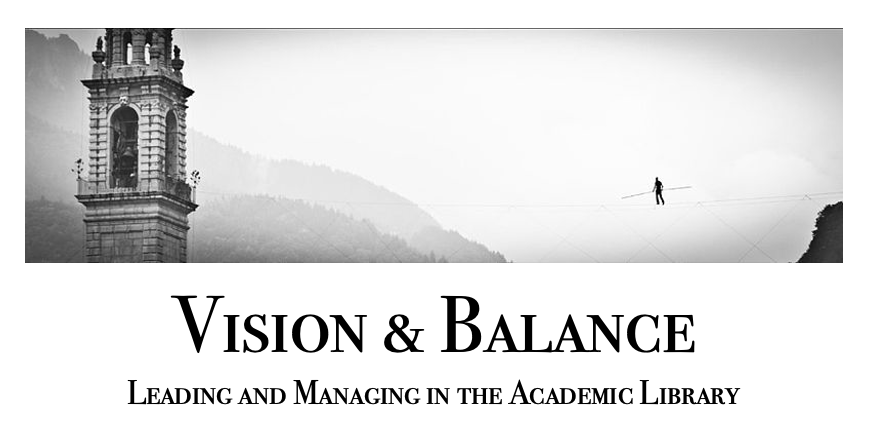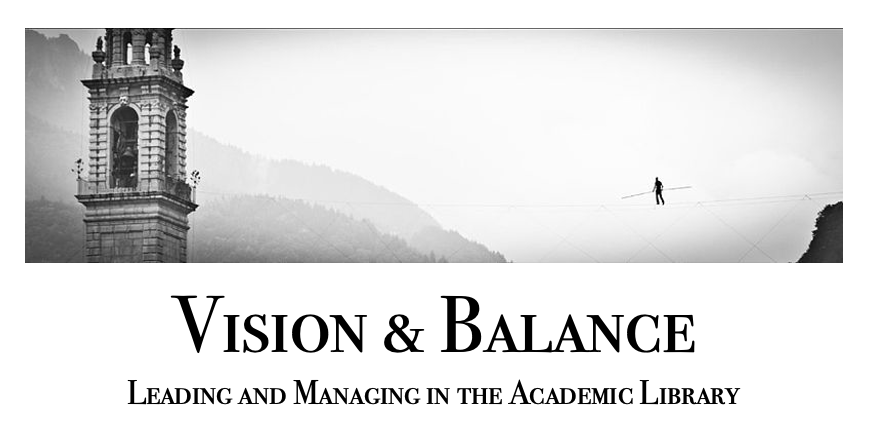Innovation, Part 2: Innovative Leadership Is Overrated. Innovative Middle Management Is Underrated.
Innovation that comes from within the organization is more likely to be successful, and to represent improvement, than innovation that comes from the top down.

In Part 1 of this two-part series, I argued that we need to think about innovation more critically, not pursuing it as an end in itself but rather making sure that we always explicitly harness innovation to the idea of improvement.
Today I’m going to proceed from the assumption that when we say “innovation,” we really mean “innovative improvement.” And I’m going to make the (perhaps controversial) suggestion that innovation is overrated in library directors, and underrated in middle management.
Let me explain my thinking.
Library directors can, and do, foster change – good ones foster change intentionally, wisely, kindly, and strategically; bad ones foster change unintentionally, wantonly, selfishly, and short-sightedly. But when directors try to foster change by being the drivers of innovative improvement in their libraries, it backfires as often as it succeeds – and even when it succeeds, it may backfire as well. Why? Several reasons:
- Innovative ideas that originate in administration will be experienced as top-down – because they are. Not all things that come from the top down are necessarily bad for the organization; pay raises come from the top down, for example. But when the message is “Here’s a new thing we should do,” the general response in the library will tend to be a collective eye-roll when the message is coming from administration (regardless of the idea’s merits).
- The director is only one person, who directly supervises few; the management team is multiple people, who supervise many. Directors don’t scale well. Each library director is a single person who only sees the work of a small number of people on a day-to-day basis. His innovative ideas will not be informed by as much input from others as those that arise from his management team will be.
- Directors aren’t “at the coalface” and don’t usually have broad enough organizational knowledge to assess and implement innovative ideas. Directors are in a good position to dictate that things be done, but not to know what doing those things would entail. (We library directors tend to think we understand the inner workings of our libraries much better than we really do.) It will be easy for a director to see the potential benefits of an innovative idea, but not to see the real-world costs of implementing it. When managers propose innovative improvements, a realistic cost/benefit assessment is much more likely to be built into the proposal.
What all of this means, among other things, is that when recruiting a library director, it’s much more important to find someone who knows how to identify and nurture creative thinkers than to find someone who is herself a creative thinker. And you definitely want to find someone who is happy to provide a platform for others to be innovative – and get the credit for it – rather than someone who has a lot of ego investment in being seen as innovative herself.
All of that being said, when it comes to innovative improvement in the library, there are at least four very important things a director can and should do:
- Set (and repeatedly invoke) a vision for the library that makes clear where the library is trying to go, and by implication what kinds of innovative improvement are needed.
- Identify innovators and creative thinkers and give them space and resources to come up with ideas that will help advance the library. (This could involve creating a Skunk Works group or something similar.)
- Stay abreast of innovative developments in the library and ensure that they stay aligned with library priorities and those of the host institution.
- Use the administrative bully pulpit to communicate broadly an organizational posture in favor of innovative improvement (by, among other things, publicly recognizing and praising such improvements when they emerge).
Takeaways and Action Items
- Ask yourself: Who are the most innovative thinkers in your organization? Where do the best and most interesting ideas come from? Then ask yourself: Do these people have enough space, and get enough recognition, to enable them to maximally help the library?
- If you already have a program in your library designed to foster innovation, are you monitoring its work to ensure that it’s staying strategically aligned?
- Look into your own heart: As a leader, how important is it to you that you be seen as the source of creative and innovative ideas in your library? How happy are you with shining the light away from you and towards your employees?
